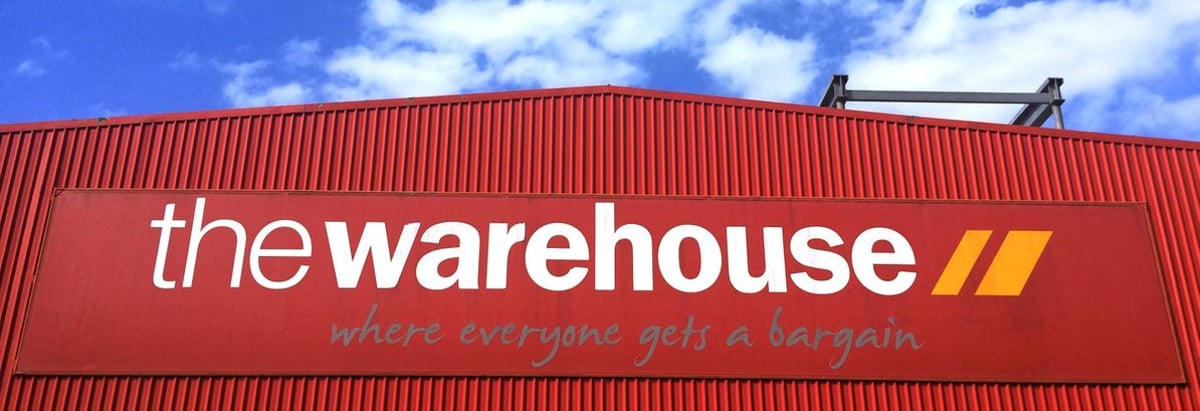Stock Analysis
With An ROE Of 14.25%, Has The Warehouse Group Limited's (NZE:WHS) Management Done A Good Job?

With an ROE of 14.25%, The Warehouse Group Limited (NZSE:WHS) returned in-line to its own industry which delivered 11.93% over the past year. But what is more interesting is whether WHS can sustain this level of return. A measure of sustainable returns is WHS’s financial leverage. If WHS borrows debt to invest in its business, its profits will be higher. But ROE does not capture any debt, so we only see high profits and low equity, which is great on the surface. But today let’s take a deeper dive below this surface. See our latest analysis for Warehouse Group
What you must know about ROE
Return on Equity (ROE) is a measure of Warehouse Group’s profit relative to its shareholders’ equity. An ROE of 14.25% implies NZ$0.14 returned on every NZ$1 invested, so the higher the return, the better. Investors seeking to maximise their return in the General Merchandise Stores industry may want to choose the highest returning stock. However, this can be deceiving as each company has varying costs of equity and debt levels, which could exaggeratedly push up ROE at the same time as accumulating high interest expense.
Return on Equity = Net Profit ÷ Shareholders Equity
ROE is assessed against cost of equity, which is measured using the Capital Asset Pricing Model (CAPM) – but let’s not dive into the details of that today. For now, let’s just look at the cost of equity number for Warehouse Group, which is 8.55%. Given a positive discrepancy of 5.69% between return and cost, this indicates that Warehouse Group pays less for its capital than what it generates in return, which is a sign of capital efficiency. ROE can be dissected into three distinct ratios: net profit margin, asset turnover, and financial leverage. This is called the Dupont Formula:
Dupont Formula
ROE = profit margin × asset turnover × financial leverage
ROE = (annual net profit ÷ sales) × (sales ÷ assets) × (assets ÷ shareholders’ equity)
ROE = annual net profit ÷ shareholders’ equity
The first component is profit margin, which measures how much of sales is retained after the company pays for all its expenses. Asset turnover reveals how much revenue can be generated from Warehouse Group’s asset base. The most interesting ratio, and reflective of sustainability of its ROE, is financial leverage. We can determine if Warehouse Group’s ROE is inflated by borrowing high levels of debt. Generally, a balanced capital structure means its returns will be sustainable over the long run. We can examine this by looking at Warehouse Group’s debt-to-equity ratio. The ratio currently stands at a sensible 55.24%, meaning Warehouse Group has not taken on excessive debt to drive its returns. The company is able to produce profit growth without a huge debt burden.
Next Steps:
ROE is one of many ratios which meaningfully dissects financial statements, which illustrates the quality of a company. Warehouse Group’s above-industry ROE is encouraging, and is also in excess of its cost of equity. ROE is not likely to be inflated by excessive debt funding, giving shareholders more conviction in the sustainability of high returns. ROE is a helpful signal, but it is definitely not sufficient on its own to make an investment decision.
For Warehouse Group, there are three pertinent aspects you should further research:
1. Financial Health: Does it have a healthy balance sheet? Take a look at our free balance sheet analysis with six simple checks on key factors like leverage and risk.
2. Valuation: What is Warehouse Group worth today? Is the stock undervalued, even when its growth outlook is factored into its intrinsic value? The intrinsic value infographic in our free research report helps visualize whether Warehouse Group is currently mispriced by the market.
3. Other High-Growth Alternatives : Are there other high-growth stocks you could be holding instead of Warehouse Group? Explore our interactive list of stocks with large growth potential to get an idea of what else is out there you may be missing!
Valuation is complex, but we're helping make it simple.
Find out whether Warehouse Group is potentially over or undervalued by checking out our comprehensive analysis, which includes fair value estimates, risks and warnings, dividends, insider transactions and financial health.
View the Free AnalysisHave feedback on this article? Concerned about the content? Get in touch with us directly. Alternatively, email editorial-team@simplywallst.com
Simply Wall St analyst Simply Wall St and Simply Wall St have no position in any of the companies mentioned. This article is general in nature. We provide commentary based on historical data and analyst forecasts only using an unbiased methodology and our articles are not intended to be financial advice. It does not constitute a recommendation to buy or sell any stock and does not take account of your objectives, or your financial situation. We aim to bring you long-term focused analysis driven by fundamental data. Note that our analysis may not factor in the latest price-sensitive company announcements or qualitative material.
About NZSE:WHS
Warehouse Group
Engages in the operation of retail stores in New Zealand.
Very undervalued with moderate growth potential.

